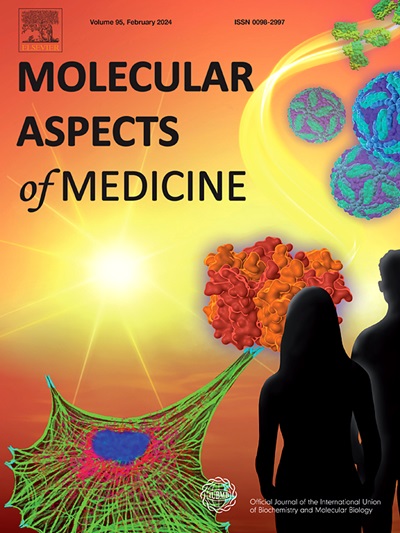附睾精子成熟的生理和病理问题
IF 10.3
2区 医学
Q1 BIOCHEMISTRY & MOLECULAR BIOLOGY
引用次数: 0
摘要
在哺乳动物中,离开睾丸的精子是无功能的,需要经过复杂的睾丸后成熟过程才能获得识别和受精卵的能力。使精子具备受精能力的关键成熟变化是在通过附睾时发生的。由于辅助生殖技术在解决男性不育症方面的广泛应用,在过去的几十年中,对精子成熟过程机制的研究明显减少。考虑到多达 40% 的男性不育是特发性的,可能反映了精子成熟缺陷,对睾丸后精子成熟的研究显然有助于更好地理解男性不育的原因,并有助于开发体外精子成熟的新方法和更安全的男性避孕方法。在此基础上,本综述侧重于附睾的生理病理以及目前正在研究的方法,以改进精子成熟的研究,并作为男性不育症的潜在治疗方案。本文章由计算机程序翻译,如有差异,请以英文原文为准。
Physiological and pathological aspects of epididymal sperm maturation
In mammals, sperm that leave the testes are nonfunctional and require a complex post-testicular maturation process to acquire their ability to recognize and fertilize the egg. The crucial maturation changes that provide sperm their fertilizing capability occur while passing through the epididymis. Due to the widespread use of assisted reproductive technologies to address male infertility, there has been a significant decrease in research focusing on the mechanisms underlying the maturation process over the past decades. Considering that up to 40% of male infertility is idiopathic and could be reflecting sperm maturation defects, the study of post-testicular sperm maturation will clearly contribute to a better understanding of the causes of male infertility and to the development of both new approaches to maturing sperm in vitro and safer male contraceptive methods. Based on this, the present review focuses on the physiopathology of the epididymis as well as on current approaches under investigation to improve research in sperm maturation and as potential therapeutic options for male infertility.
求助全文
通过发布文献求助,成功后即可免费获取论文全文。
去求助
来源期刊

Molecular Aspects of Medicine
医学-生化与分子生物学
CiteScore
18.20
自引率
0.00%
发文量
85
审稿时长
55 days
期刊介绍:
Molecular Aspects of Medicine is a review journal that serves as an official publication of the International Union of Biochemistry and Molecular Biology. It caters to physicians and biomedical scientists and aims to bridge the gap between these two fields. The journal encourages practicing clinical scientists to contribute by providing extended reviews on the molecular aspects of a specific medical field. These articles are written in a way that appeals to both doctors who may struggle with basic science and basic scientists who may have limited awareness of clinical practice issues. The journal covers a wide range of medical topics to showcase the molecular insights gained from basic science and highlight the challenging problems that medicine presents to the scientific community.
 求助内容:
求助内容: 应助结果提醒方式:
应助结果提醒方式:


